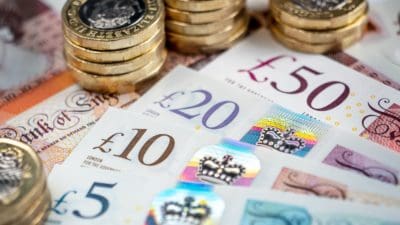Investors in integrated producer and broadcaster ITV(LSE: ITV) have endured a sickening slide in the firm’s stock of around 45% since the beginning of December 2015. Previously perky-looking double-digit annual earnings increases gave way to single-digit declines in 2017 and for 2018, and the market hasn’t taken the situation well.
A strong base to build on
Yet the firm still creates, owns and distributes content on multiple platforms and is well known for its family of free-to-view channels ITV, ITV2, ITV3, ITV4, ITVBe, ITV Hub, and for its pay channel ITV Encore. That strikes me as a strong base on which build a turnaround, and the company said it is “undertaking a strategic refresh to ensure that [it] has a clear strategy and priorities which reflect what ITV needs to be in three and five years’ time.”
The media landscape is “increasingly competitive,” chief executive Carolyn McCall said back in February, in the full-year results report. However, 2018 got off to a good start with on-screen and online market share and volume of viewers “growing strongly.” It aims to back up that head start with a robust schedule during the coming year, including the FIFA World Cup. But delivering quality content comes at a price. The directors expect total schedule costs for 2018 to come in between £1,055m and £1,060m and to rise to £1.1bn in 2019 due to higher sports and drama spend.
Despite the high stakes, the directors expressed their confidence in the outlook by pushing up the full-year dividend by 8%. Meanwhile, City analysts expect earnings to slip 4% during 2018 and to lift just 1% the year after that. But I think the market has become too comfortable with ITV’s gently falling share price and the move could be overdone. At the recent 143p, the forward dividend yield for 2019 is a chunky 5.9% and the forward price-to-earnings (P/E) ratio an ultra-cautious nine or so. I think it is worth more.
Negative sentiment
There’s also a good argument for undervaluation with communications services company WPP (LSE: WPP), which specialises in advertising and public relations. The stock has slipped around 42% since the beginning of 2017, and in March’s full-year results report, outgoing chief executive Sir Martin Sorrell said: “2017 for us was not a pretty year, with flat like-for-like, top-line growth, and operating margins and operating profits also flat, or up marginally.”
It seems that customer companies have been holding back on their promotional budgets and there could also be an element of disruptive online competition from the likes of Google and Facebook. The market is worried about the outlook, and to add more weight to negative investor sentiment, Sir Martin, the company’s founder, recently stepped down after the completion of an investigation into an allegation of misconduct.
Despite the difficult trading environment, Sir Martin said he thought the firm’s core abilities and strengths would win through in the end, and City analysts following the firm expect earnings to slide 26% during 2018 and to rise 4% in 2019. With well-covered 5%+ dividend yields on offer from both these two stocks, I’d watch for evidence of basing on their share-price charts with a view to buying some of the shares to harvest the yield and wait for operational recovery.






